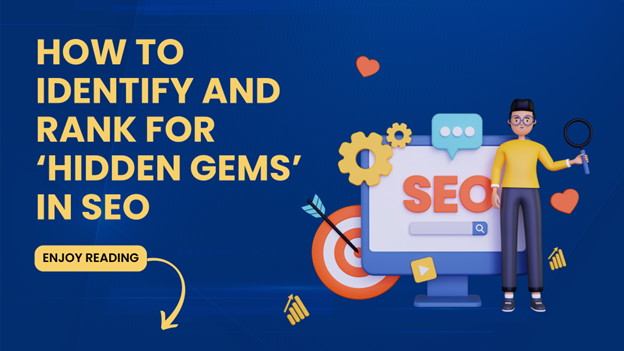Chances are you already know that Google has many digital marketing services in products, and most likely you are even using or have tried to use some of them. However, you might not know all of them. We decided to write a comprehensive guide where we gathered all the free and paid Google marketing tools. After reading this article you’ll be able to understand the difference between all these services offered by Google and make a decision on what tools are going to be the most useful ones for you.
Google Marketing Platoform
Google Marketing Platform is a hub with several modern tools that can help you increase your online visibility
1. Google Analytics and Google Analytics 4
Google Analytics (GA) will be useful if you have a website, and Google Analytics 4 combines website and app data on the same platform. With GA, you can track online traffic, analyze user behavior, and generate customized data reports with key performance indicators (KPIs) of your choice. It also offers marketing analytics to enhance your online ads and conversion tracking to monitor desired conversions. Effective user segmentation enables you to target your audience more efficiently, while performance analysis of your eCommerce activities helps you optimize business operations. You can also track your goals, receive performance improvement suggestions, and discover the ideal marketing platforms for your needs. Finally, this tool can help you enhance your SEO and content marketing efforts, and gain a better understanding of your target group.
To make the best out of this tool, you can study this short course for beginners directly from Google which takes 4 to 6 hours to complete. Besides, you can find many comprehensive online tutorials on YouTube.
2. Google Optimize
Google Optimize is an online optimization tool from Google that helps to increase conversion rates. It enables users to create and run a wide range of A/B tests experiments, allowing them to make informed decisions about their website or application.
Google Optimize can be used to run nearly all essential types of experiments, including:
- A/B Test: Also known as A/B/n testing, this consists of two or more versions of the same webpage or element in order to determine which one performs best in terms of conversions. It can also be used for more complex experiments.
- Multivariate Test: This type enables users to test multiple elements at the same time, with up to 16 combinations available on Google Optimize and 36 combinations available on its paid upgrade, Optimize 360.
- Split URL Testing (also known as redirect tests): Used for comparing two different webpages by randomly redirecting users from one page towards its variation in order track their reactions and obtain a valid success rate while redesigning the website (e.g., single-page checkout vs multi-page checkout).
- Server-Side Experiment: Coding does most of the work here, with experiment code being injected directly from the server side; it is ideal for testing algorithms that do not have a load time option and for making complex changes on the site (Google provides a step-by-step process for setting up such an experiment).
- Personalization Tests: Personalization uses algorithms based on data such as geographical location, age, device history etc., in order to engage users by providing them with personalized experiences tailored towards fulfilling their needs (e..g “products you may like”). With Google Optimize it is possible to set objectives targeting specific groups of visitors or permanently personalizing websites.
3. Google Tag
Google Tag Manager (GTM) is a tool that allows you to install, store, and manage marketing tags without modifying website code.
4. Google Display and Video 360
Display & Video 360 (DV360) is a tool for setting up and running display ads, such as banners and video ads. It has similar functionality to Google Ads but offers several key differences that make it more suitable for large advertisers. For example, DV360 allows users to manage multiple campaigns from one platform; it also provides access to a range of creative tools, including audience insights, automated bidding strategies and comprehensive reporting.
There are two more paid services on Google Marketing Platfrom:
Google Business Profile
Google has integrated several services into one – Google Business Profile (GBP), previously called Google my business. It serves as a link between businesses and the Google search engine. By having a profile on this platform, you can increase the chances of your company and products appearing in search results for relevant queries. Furthermore, you can have control over how your company is presented on Google. That’s why creating a Google My Business profile is a crucial component of local search engine optimization. You can set up a page for your business even if it doesn’t have a physical spot.
To use Google Business Profile as a marketing tool and control your own presence, you need to follow these steps:
- Sign up as a business owner. You will need to confirm your identity and ownership either by calling or via email. If there is no entry for your company yet, you’ll need to add it to Google. If it is already there, you can just claim it.
- Choose a category for your business.
- Add or correct your location if needed. If your business doesn’t have a physical spot, you have an option to state it at this step.
- Choose your service area. This step is optional.
- Add contact information. It can include a website and a phone number.
- We recommend to opt in for updates and additional recommendations. It will allow you to learn directly from Google.
- Verify your listing. There are five ways to do it: by phone, by email, by a postcard,by video recording or a live video call.
- After verification you’ll be able to add more information about your business, specify your offers, and upload photos.
Google Trends
In marketing, the best decisions are often the data-driven ones. Google Trends (GT) is a tool that can be of great help when it comes to online trends research as it enables you to get hard data about what people are looking for on the internet. It measures the popularity of search terms in real time, including information such as the area where the searches come from, the periods when certain topics are at their peak popularity, and whether the growth in popularity is seasonal, steady, or the trend is just a fad. GT is your assistant when it comes to planning a content strategy, and there are several practical ways to take advantege of it:
- You can discover what topics are trending now. Usually these topics would not be closely related to your business area, so there is no need to invest in long-term conent about them. However, posting a mem about something that is trending or sharing an opinion on social can lead to many reposts and increased attention to your brand’s page.
- You can identify searches that are related to certain seasons or holidays, and therefore regularly come back around the same time. This will give you hints on how to adjust the timing of your organic content and your ads.
- GT allows you to select a specific country, region, city, or even a metro area when reviewing a keyword popularity. This means you can identify where most of your potential customers live and target your ads better, as well as adjust your local SEO strategy.
- Another thing you can achieve by selecting a certain location is identifying what other topics are popular in your area at the moment. This information is useful for planing content and deciding what collaborations can be especially fruitful.
- With GT you can find out who your competitors are and learn what you do to achieve their levels of popularity, or what is unique about your product.
- Finally, GT is also applicable for YouTube and if you create content there, you can identify all of the above but for videos.
There an authorized tutorial from Google about best ways to use Google Trends..
Google Keyword Planner
Google Keyword Planner (KP) is also a tool for identifying popular keywords related to a certain topic. The difference between Keyword Planner and Google trends is that the former shows absolute search volume data and corresponding forecasts, while the latter shows the relative popularity of a search term, which is a good thing to know when developing a SEO strategy. Besides, as Keyword Planner is a part of Google Ads marketing platform, it estimates the cost of targeting specific searches.
How to use Keyword Planner
To use Keyword Planner, you need to use a Google Ads account in an Expert mode. For a start, you can type in up to 10 words or phrases that are related to your business and optionally add a link to your website, and KP will return you a list of terms that a frequently searched in relation to the keywords and phrases that you entered. There is also a tool that allows your to refine and filter out keywords to improve your search results and get rid of distractions. Google’s AI can find you not only exact coocurrances, but also matching to semantically close words if you tell it to do so. There several useful metrics available in the results:
- A range of average monthly searches. You can sort it differently to either identify trending topics or the so called low-competition long-tails that get just a few monthly searches. Those are usually easier to rank for than popular keywords.
- Three month change metric can help you find seasonal topics.
- Top of page bid will give you an idea of how much advertisers spend on clicks for a keyword.
- YoY change metric shows the change in search trends between the latest month and the same month from the previous year.
Here you can find a Help page about the tool designed by Google with more information and tips.
Google Alerts
Another tool centered around keywords is Google Alerts. Unlike Google Trends and Keyword Planner, it is a subscription service that will notify you about online activity about the search terms you are interested in by Email. There are several types of useful information that you can get from this tool:
- Information about your business. You’ll be informed whenever the company’s name is mentioned and by what site, including common misspellings.
- Information about your product(s). Stay aware of what is said about the company’s product(s), and by whom.
- Mentions of company executives. Receive alerts when new content mentions executives, as their reputations can affect that of the organization.
- Mentions of your competitors. You’ll receive information about competitor activities and new developments.
- Mentions of influencers or texts written by them. Keep track of what key figures in an ecommerce business’s field are saying to identify trends early.
- Industry developments and technologies. Keep an eye on what is new in the market and which technologies are evolving; this will help customers appreciate a provider that maintains expertise in their field by knowing all latest developments.
Google Search Console (with a training video course)
Google Search Console (SC) previously known as Google Webmaster Tools is a platform that gathers lots of information about your website’s usability and SEO. It is incredibly helpful for web developers and website owners, and it can improve your website’s performance on Google Search. It will hint you how to optimise your content and get in on Google, and then tell how your pages look on Google Search. Finally, it will send you alerts about your website’s issues so you can fix them and improve your website’s user experience.
Google AdSense
Google AdSense is an advertising program that enables online publishers to earn money by displaying third-party Google ads on their websites. Businesses pay to advertise through this platform, and in turn, site owners receive a portion of the revenue based on either clicks or ad impressions.








